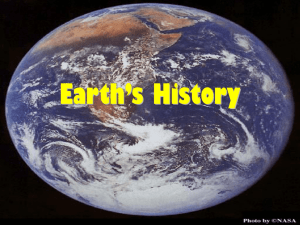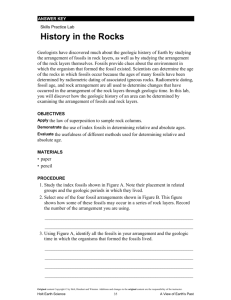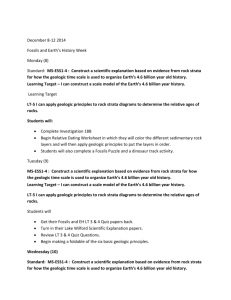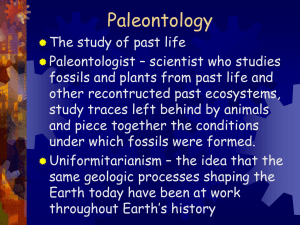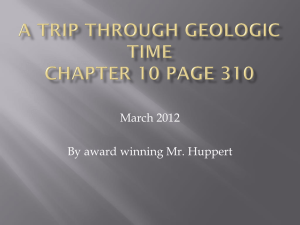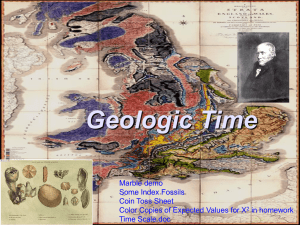Topic 13 - Correlation
advertisement
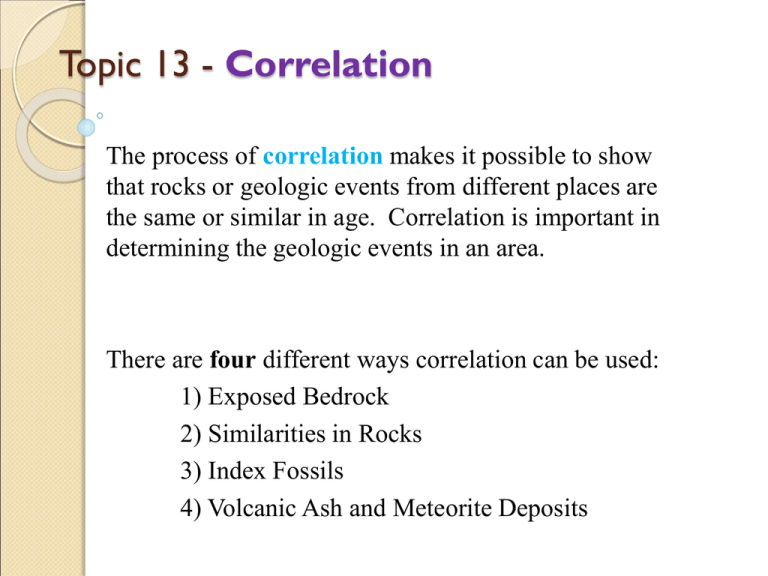
Topic 13 - Correlation The process of correlation makes it possible to show that rocks or geologic events from different places are the same or similar in age. Correlation is important in determining the geologic events in an area. There are four different ways correlation can be used: 1) Exposed Bedrock 2) Similarities in Rocks 3) Index Fossils 4) Volcanic Ash and Meteorite Deposits Correlation by bedrock (an area’s local rock) can be done where the bedrock is exposed. You can directly follow the layers of rock to see if they continue or end. When rocks are separated from each other, rocks can be dated by their similarities. These similarities include appearance, color, mineral composition, and rock sequences. Correlation can also be done involving fossils. Fossils are the remains of evidence of former living things – such as bones, shells, footprints. The fossils that are used when correlating are called index fossils. Using page 8 and 9 in the ESRT can be used to date the fossils Index fossils have to meet 2 conditions: 1) The life form must have lived over a wide geographic area. 2) The life form must have existed for a relatively short time. Lastly, correlation can be done by volcanic ash and meteorite deposits. During a volcanic eruption or a meteorite impact, both ash and meteorite debris are deposited over a large spread area. These deposits of volcanic ash server as a specific age markers in rocks. Geologic History - Geologic time is divided into pieces - The divisions are from longest to shortest called eons, eras, periods and epochs. - A model of these divisions of geologic time is called the geologic time scale. - The time scale is located on page 8 and 9 in the ESRT. - Precambrian is a “super” eon, composed of the earliest Archean and Proterozoic eons. Any fossils from the Precambrian are rare and difficult to find. - The K-T Boundary is during the Cretaceous and Tertiary periods, when the dinosaurs became extinct. - Pangea began to break up in the Triassic period. - Earliest humans are found in the Quaternary period, Cenozoic Era, Phanerozoic Eon. Unconformities In attempting to read the rock record, geologists often find evidence of buried eroded surfaces called unconformities. If a rock layer is exposed to weathering and erosion, then later more deposition occurs, this location will be missing part of the rock record. The Key to Figuring out Past History “the present day is the key to the past” – this principle implies that geologic processes happening today, occurred in the past. Present day observations can help scientists make certain predictions about the future.


